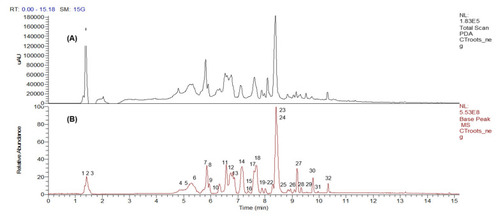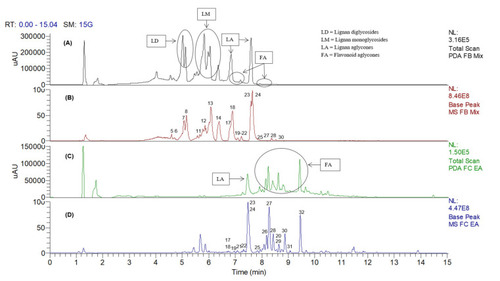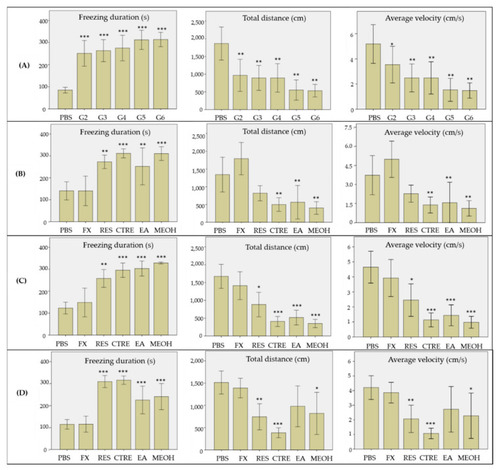- Title
-
Clitorienolactones and Isoflavonoids of Clitorea ternatea Roots Alleviate Stress-Like Symptoms in a Reserpine-Induced Zebrafish Model
- Authors
- Ngadni, M.A., Akhtar, M.T., Ismail, I.S., Norazhar, A.I., Lee, S.Y., Maulidiani, M., Shaari, K.
- Source
- Full text @ Molecules
|
The LC–DAD (A) and LC–MS (B) base peak chromatogram profiles of Clitorea ternatea crude root extract in negative ion mode. |
|
Proposed characteristic fragmentation pathway of compounds 17, 18, 23, and 24 (Clitorienolactones D, C, B, and A, respectively). |
|
The LC–DAD and LC–MS base peak chromatogram profiles of the 50% MeOH (A,B) and EA (C,D) fractions of Clitorea ternatea roots, in negative ion mode. |
|
Behavioral effects of the crude methanolic extract, EA, and 50% MeOH fractions of PHENOTYPE:
|
|
Groupings and experimental workflow of the zebrafish in vivo assay. |





